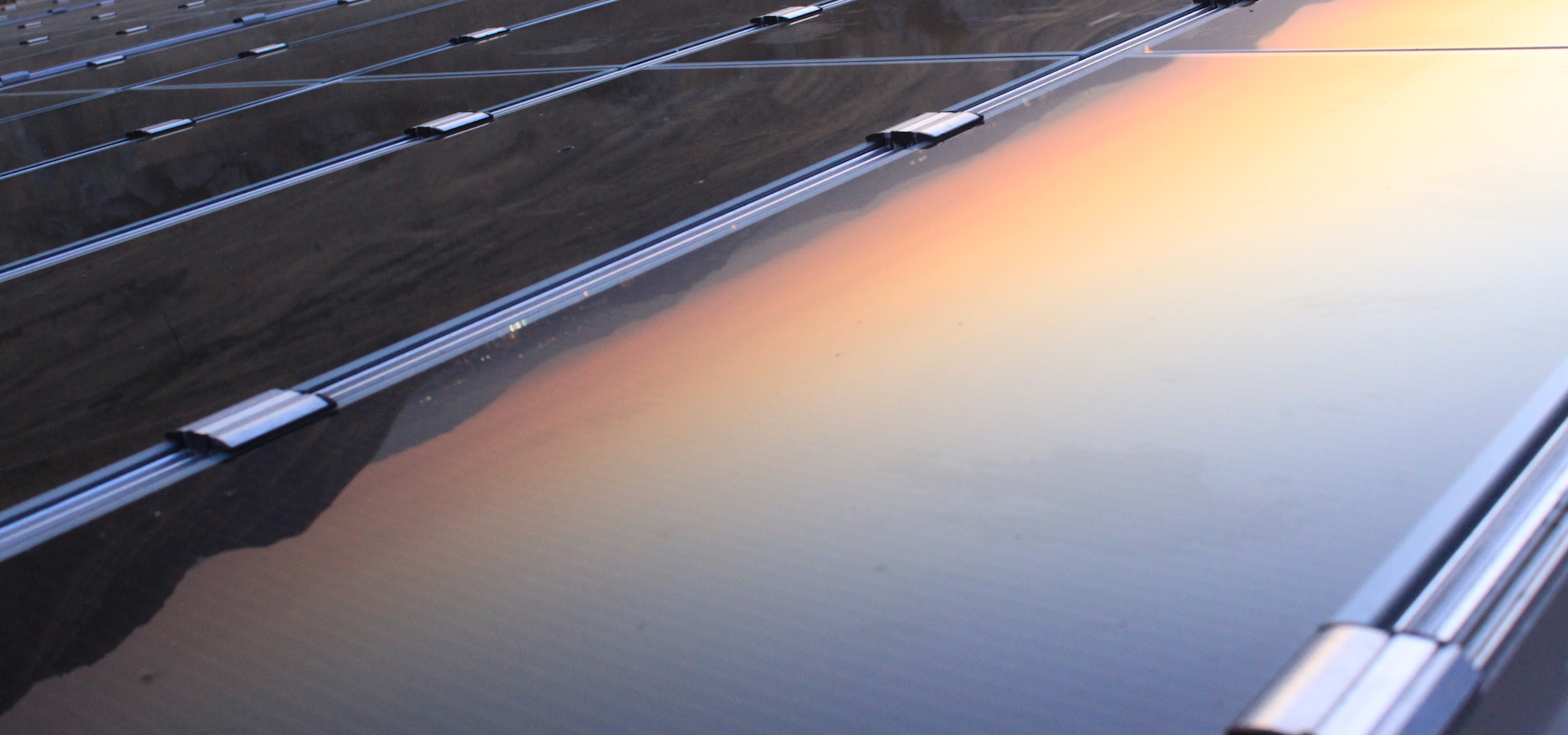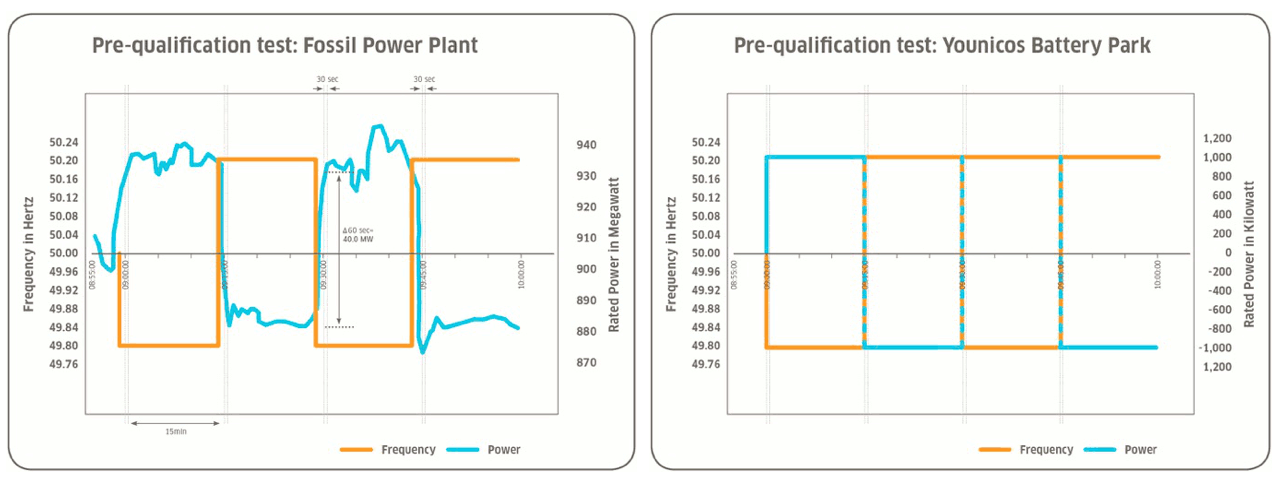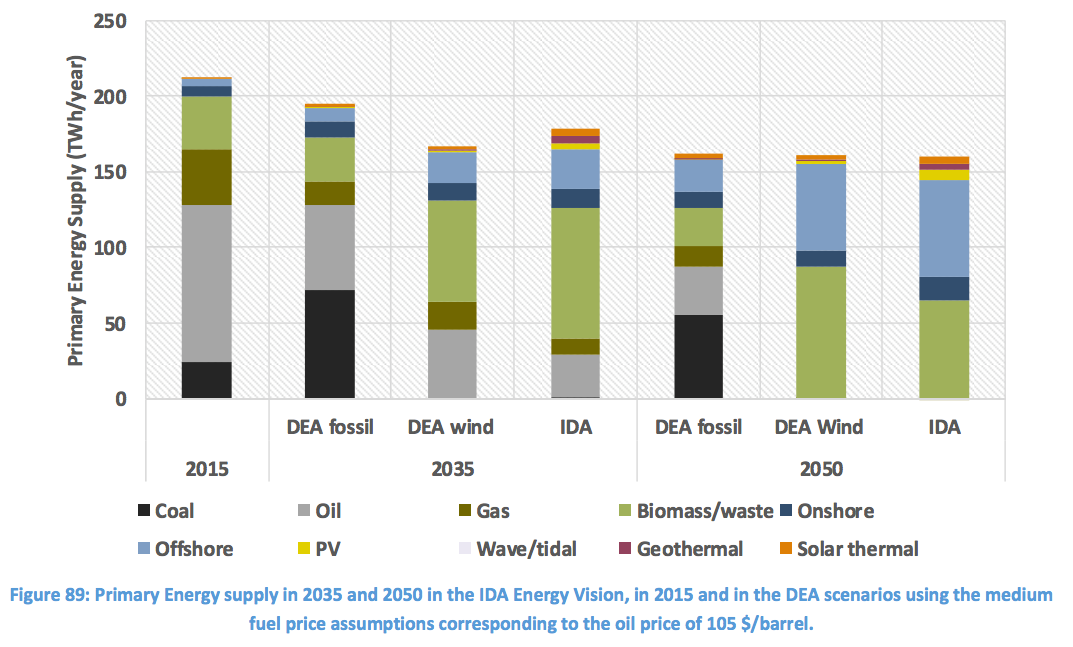Over the past year, the Anglo world has become interested in nuclear as a complement for wind and solar towards “deep decarbonization,” or a (nearly) 100% carbon-free supply of energy or possibly just electricity. Today, Craig Morris reviews a few papers by Americans and Australians and advises them to tackle the best European studies for 100% renewables head-on, not ignore them.

Scenarios with 100% renewable energy aren’t a pipe dream – they’re becoming reality. (Photo by Thomas Galvez, edited, CC BY-SA 2.0)
The first paper is by Stephen Brick and Samuel Thernstrom. Thernstrom has been calling nuclear “an essential part of the puzzle” since at least 2010. The paper is peer-reviewed; unfortunately, none of the reviewers noticed the oversights I found. But let’s start off with a contention the authors state in the introduction:
“In seeking to demonstrate that renewables can by themselves replace all fossil fuels and nuclear energy, these studies run the risk of treating renewables as a societal end in itself, instead of just one among a suite of technologies that could be used to achieve the combined goals of environmental protection, cost-containment, and electric system reliability.”
Why shouldn’t renewables be an end in themselves? Assuming nuclear power (plus whatever) is the cheapest low-carbon option, might other impacts society dislikes relativize the low price? To name just a few examples (and we’ll leave out whatever nuclear risks may or may not exist):
- Overcoming the military-industrial complex: nuclear has always been a centralized industry, with just a few firms that have very close contacts to the government. And keeping nuclear skills for military purposes seems to be a driver in the UK’s push for new nuclear.
- Transparency in democracy: as numerous authors from various countries have found, the nuclear sector has always come at the expense of open democracy. Strikes, for instance, are a safety issue.
- Stronger economic growth in communities, especially rural ones: if communities can make their own energy, why would they want to pay some out-of-town corporation, even if the energy is slightly cheaper? People simply are willing to pay more for quality, and local jobs are a quality (not to mention being energy-independent). The price is relative when you pay it back to your community.
But let’s get back to the gist of the paper, which reviews three studies allegedly “arguing that the GHG reduction burden can be met solely or mainly by renewable energy alone,” one of which is Kombikraftwerk (meaning “combined power plant”), which I have discussed before. Yet, the German study does not argue any such thing (PDF in English). Rather, it investigates whether power supply can remain reliable if based largely on wind and solar without any rotating masses from coal or nuclear plants, including black starts. It does not address heat and mobility at all. Across 220 pages, the following words are never used:
- carbon,
- greenhouse, and
- emissions
“CO2” is mentioned four times, but only in the context of producing methane from hydrogen (our current gas turbines, stoves, etc. fired with natural gas can run on methane, but not on pure hydrogen, so we’d get to keep all our stuff if we had methanized H2). Strangely, in their paper from April 2016, Brick & Thernstrom reference only Kombikraftwerk’s website, not the full study from 2014. They do not seem to have read it, for they mention no aspects in it; my colleague Thomas Gerke and I covered it across eight blog posts in 2014 (work your way back from here).
Now, on to an outdated Danish paper…
The story gets even better when we consider this peer-reviewed paper by Heard et al., a group of Australian and US-based researchers, entitled “Burden of proof: A comprehensive review of the feasibility of 100% renewable-electricity systems.” Comprehensive? It doesn’t mention Kombikraftwerk.
It does, however, criticize a 2009 paper co-authored by Brian vad Mathiesen on such a 100% renewable scenario for Denmark, giving it one out of four points. The criteria for the scoring of the papers reviewed are strange:
- “consistency with mainstream energy-demand forecasts;
- simulating supply to meet demand reliably at hourly, half-hourly, and five-minute timescales, with resilience to extreme climate events;
- identifying necessary transmission and distribution requirements; and
- maintaining the provision of essential ancillary services.”
It is not possible to state grid needs (3) without focusing on a particular country, so the findings would not necessarily be transferrable, and even then you have to decide between two types of supply concepts: 1) a focus on central plants where solar and wind resources are the best, but requiring more power lines; and 2) a more distributed supply system based on smaller solar arrays on suitable buildings and small wind farms scattered around – but requiring fewer long-distance power lines because the generators are installed closer to points of power consumption. In other words, grid expansion is partly a political decision.
Second, Kombikraftwerk addressed reserves (2) and ancillary services (4). But Heard et al. focus on peer-reviewed literature, which is usually limited to 8,000 words – quite a short space for all four criteria. Examples of simulations include Kombikraftwerk at 220 pages. The main US simulation, NREL’s Futures study from 2012 on 90% renewable power, has four volumes, the first of which (PDF) is 280 pages long.
Furthermore, the “hourly, half-hourly, and five-minute timescales” that Heard et al. want do not represent anything the grid needs, but rather reflect the (limited) capabilities of rotating masses in conventional power plants. The grid needs reactions by the millisecond. Batteries do that best, such as the grid-attached ones made by Germany’s Younicos – a spin-off of the German solar sector.

Left: a fossil-fired plant approximating the frequency needed on the grid. Right: a grid-attached battery storage unit nailing it. Source: Younicos.
Finally, requiring “consistency with mainstream energy-demand forecasts” (1) is a joke given the poor performance of past mainstream forecasts, which have overestimated power demand and underestimated both solar and wind.
But the real problem here is that lower consumption does not jibe with nuclear historically. Nuclear originally promised nearly unlimited electricity, and the technology’s supporters say more energy is needed, not less, especially in developing countries. Here is one pro-nuclear group attacking, for instance, renewables advocate Amory Lovins’ call for efficiency. Nuclear proponents often depict the efficiency aims (= lower consumption) called for by renewables proponents as unrealistic.
In contrast, the renewables camp sees efficiency as crucial because, for instance, we don’t have enough sustainable biomass to support our wasteful habits today. In addition to efficient devices, “sufficiency” – changing lifestyles to make do with what Mother Nature gives us – is therefore crucial. Switching to an electric car is not enough; we will need to walk and cycle more, both of which require compact neighborhoods (a societal, not technical, issue).
Heard et al. thus mistake a scenario assumption for a forecast: “Twelve (50%) {of the studies} relied on unrealistic forecasts of energy demand.” But when Greenpeace’s Energy (R)evolution or the WWF speak of far lower primary energy demand, they are saying IF demand is lower THEN a high share of renewables is possible (disclaimer: I was the editor of the 2015 edition of Energy (R)evolution).
By design, Heard et al. is biased against renewables in deducting points for scenarios based on reduced primary energy demand – because there are no scenarios for high shares of renewables with the high demand levels Heard et al. insist on having.
“The Energy [R]evolution scenarios are target-oriented scenarios. Therefore, they must not be interpreted as a ‘forecast’ of the future development of the energy systems.”
- From the 2015 edition of Greenpeace’s Energy (R)evolution, page 61 (PDF)
The overlooked update
What’s worse, in their 2017 paper Heard at al. discuss Mathiesen’s 2009 paper on a 100% renewable Denmark as though nothing had happened since. The six-page summary (PDF in English) of the follow-up 2014 scenario is admittedly sparse on details, but we can see a plan taking shape. In 2015, Mathiesen, not unknown to my readers, and his team then fleshed everything out in a 159-page PDF (in English), including a new scenario called the IDA Energy Vision. As you can see below, biomass is still based as much as possible on waste, and the rest is mainly wind power. This is what a 100% scenario looks like when you do the footwork for a given country. It would look much different in, say, Saudi Arabia, with very little wind but ample solar. It would also look different in countries with lots of hydropower. One conclusion is thus that investigating 100% renewables is hard without saying where.
In the end, we are left with a discussion in the English-speaking world held by nuclear advocates about 100% renewable energy, in which too little notice is taken of the main studies in two leading countries investigating “deep decarbonization” without nuclear or CCS: Denmark and Germany. What’s worse, not a single journalist covering these papers, including Vox.com’s David Roberts (one of the best) pointed out the oversight. America’s best minds write about 100% renewables, and no one notices the gaps. As President Trump might say: sad.
I’ll close with an example of the different mindsets. The Germans have concluded that simply calculating a certain amount of nuclear power at a certain price, as American studies generally do, won’t work with lots of solar and wind. You have to include nuclear ramping: less electricity generated per reactor. As my German colleagues put it, “profile costs… have received {the} least attention in the literature.”
In my next post, I focus on Roberts’ notion that nuclear is dispatchable. As a teaser, you may want to (re)visit my previous articles on nuclear ramping. Just use the search box.
{This text was updated to show that Heard et al. are Australians, not Americans, and that the Heard et al. paper discussed here was not reviewed by Thernstrom and Jesse Jenkins, but published later.}
Craig Morris (@PPchef) is the lead author of Global Energy Transition. He is co-author of Energy Democracy, the first history of Germany’s Energiewende, and is currently Senior Fellow at the IASS.

Don’t leave out Australia. It has fierce political, economic, and intellectual conflicts over energy and at the moment the renewables camp are in the ascendant. Here’s John Quiggin, a pretty eminent or at least notorious economist, dismissing the Heard paper (link). AEMO, the grid operator, carried out one of the first credible studies on 100% renewable electricity. It concluded it was doable, with large-scale CSP or geothermal as the despatchable. That was before the big price drop in batteries and the disappointments in EGS geothermal. Australia is dry, with limited new hydro potential. As you say, the solution to grid sustainability depends on where.
“In contrast, the renewables camp sees efficiency as crucial because, for instance, we don’t have enough sustainable biomass to support our wasteful habits today.” Speak for yourself. Some scholars like Stanford’s Mark Jacobson (why isn’t his group mentioned?) make a point of modelling the same energy services and lifestyle as we have today, and show this is feasible. You get a 50% gain in efficiency automatically, simply replacing 40% efficient coal power stations and 20% efficient ICEVs with 100% efficient solar and wind generators, 90% efficient batteries, and 80% efficient EVs.
Jacobson is right. The hair-shirt components of the traditional green position are damaging to the alliance-building needed for the transition. It may well be also a good idea to have walkable cities, village solidarity, less meat, and a more frugal lifestyle, But these are arguments within the transition, not preconditions. Some people want to drag race muscle electric cars and hold rock concerts with kilowatt amplifiers and light shows run off green electricity. Not my cup of tea, but what’s the harm?
Imagine that… someone knee deep in the German renewable transition thinks its better than nuclear… all the while Germany burns more fossil fuels and their CO2 emissions are increasing. Science demands your theory match observation… so far Energiewende has not shown itself to be well rooted in reality.
Germany’s emissions from power generation are falling, agreed slowly but falling not every year depending on weather , nuclear generation capacity and export import balance, Declines have resumed this year. As the author points out this has happened in spite of the falling contribution from nuclear and since 1990 emissions have declined about 33% in spite of the economy growing by 40% in real terms. i.e. they have halved their emissions intensity since 1990.
Perhaps you should check you definition of reality
I find it hard to believe that someone with knowledge of the history of Energiewende would advocate for using Germany as a model. Anyone can go look up their emissions and see that they are high AND haven’t lowered as Germany has attempted to replace their nuclear with renewables (while causing a fair amount of damage to industrial equipment and encouraging companies to defect from the grid in order to protect their assets.
Correction: Jacobson cites a 30% gain in efficiency not 50% in his 2011 paper (link).
The point holds. Heard et al are even more wrong than I said. For as far as I can make out without paying Elsevier $38 blackmail, they treat primary energy demand as exogenous, and then attack pro-renewables scholars for refusing to use the energy forecasts developed without them. But efficiency, and hence primary energy demand, is an endogenous variable depending on the generation and transport technology you are modelling. You really have to start with energy services – heating and cooling materials and buildings, moving people and stuff around, driving machinery and appliances of al sorts – as your exogenous variable.
Intrigued that one commenter calls the highly respected Professor Quiggan “notorious” . I am intrigued at the mention of “Heard” in this article. Could this be Australia’s best known psuedo environmentalist Ben Heard, who relentlessly lobbies on behalf of the nuclear industry. Now there’s a really notorious Australian!
Professor Quiggin with two i-s has a delightful selection of testimonials on his blog masthead, including “More intelligent than Britney Spears” from one Jason Soon and “A green activist with a totalitarian mindset” from an editorial in Murdoch’s The Australian. His most recent book, an attack on neoliberalism, is titled “Zombie Economics”. He clearly values efficacy over respectability. My kind of Australian.
See Ben Heard’s Reply to Craig’s critique on his facebook page https://www.facebook.com/brightnewworld.org/videos/1425519814158076/?ref=notif¬if_t=like¬if_id=1495167589285254
And an exchange with me.
[…] Energy Transitiondocument.write(time_ago(new Date('2017-05-16T00:59:19Z'))+''); […]
[…] scenarios. Both of which were written by (non-German) proponents of nuclear. As I showed in a previous post, that wasn’t all we know – English speakers are ignoring the biggest studies from […]
So the only thing that I am reading here is that Craig Morris confirms the main arguments by Brick and Heard.
There is indeed absolutely no proof that a 100% renewable based on almost exclusively intermittent energy sources is possible.